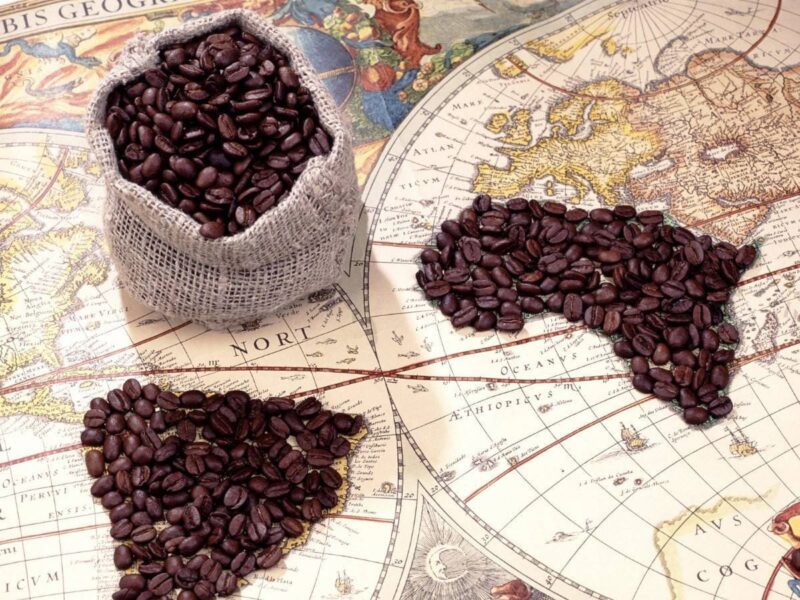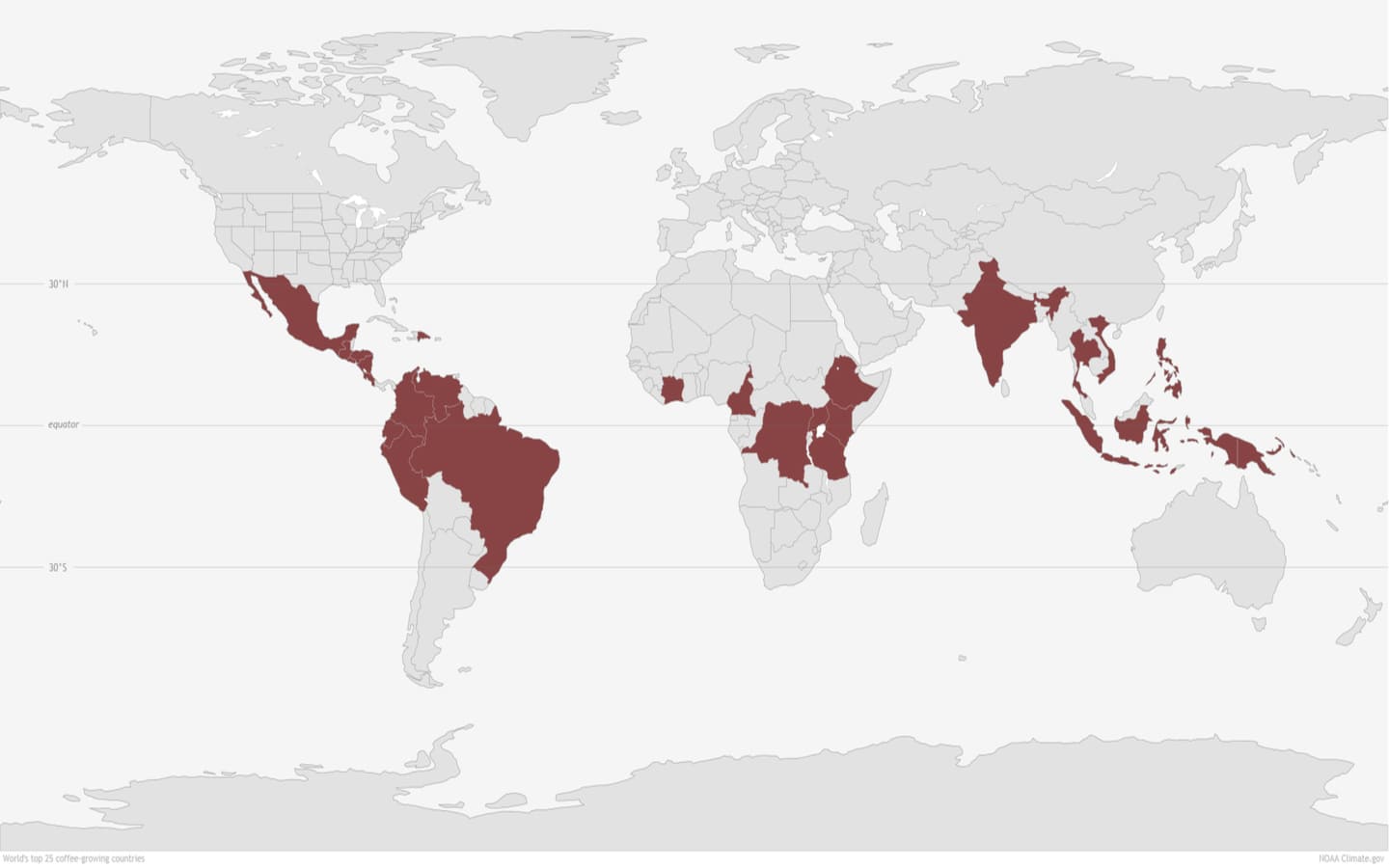Arabica coffee grows best in the Western Hemisphere at an altitude of 1000-1800 meters (3300-6000 feet) above sea level, while Robusta coffee grows mainly in the Eastern Hemisphere at an altitude of 800-1200 meters (2600-4000 feet) above sea level. In the world, the most Arabica is grown in Brazil, and the most Robusta is grown in Vietnam.
Arabica coffee, the most popular in the world, grows mainly in the highlands of countries with a tropical climate, the so-called “Coffee Belt” (Bean Belt, Coffee Zone). The Coffee Belt covers the area 30 degrees north and 30 degrees south of the equator. Although many other countries also grow coffee, the world’s top coffee producers are:
| № | COFFEE PRODUCING COUNTRY | ||
| North America | |||
| 1 | California (USA) | 3 | Mexico |
| 2 | Hawaiian Islands (USA) | 4 | Georgia (USA) |
| Central America | |||
| 5 | Guatemala | 11 | Honduras |
| 6 | Dominican Republic | 12 | Jamaica |
| 7 | El Salvador | 13 | Nicaragua |
| 8 | Costa Rica | 14 | Panama |
| 9 | Cuba | 15 | Puerto Rico (USA) |
| 10 | Haiti | ||
| South America | |||
| 16 | Bolivia | 19 | Colombia |
| 17 | Brazil | 20 | Peru |
| 18 | Ecuador | 21 | Venezuela |
| Africa | |||
| 22 | Angola | 30 | Madagascar |
| 23 | Burundi | 31 | Rwanda |
| 24 | Ethiopia | 32 | Sudan |
| 25 | Zimbabwe | 33 | Tanzania |
| 26 | Cameron | 34 | Uganda |
| 27 | Democratic Republic of Congo | 35 | Democratic Republic of Sao Tome and Principe |
| 28 | Cote D’Ivoire | 36 | Kenia |
| 29 | South African Republic | ||
| Asia and Oceania | |||
| 37 | India | 41 | Sulawesi (Indonesia) |
| 38 | Mocha (Yemen) | 42 | Sumatra (Indonesia) |
| 39 | Papua New Guinea | 43 | Vietnam |
| 40 | Java (Indonesia) | 44 | Philippines |
Native to the Hawaiian Islands of the United States, the volcanic soil is rich in minerals, which is why the coffee grown here is the most amazing coffee in the world. The coffee of the region called Kona is unbelievably expensive and held in high esteem. Coffees grown in Hawaii’s Puna, Kau, Hamakua, Maui, Molokai regions differ from each other in acidity and other taste properties.
In the past, Mexican coffee was considered to be of low quality. But now the picture is different. Coffee is grown in 12 different states in Mexico. The soil here is mainly acidic, which is why the nature of the coffee is due to it. Many of the coffee farms here are small. They are mostly cooperatives that specialize in organic coffee production. The large-scale production region of Chiapas shares its highlands with the top 3 coffee-producing regions of Guatemala, producing 1/3 of Mexico’s total coffee production. Mexican coffee makes many interesting coffee blends.
In Central America, in Costa Rica, coffee grows at an altitude of 1000-1800 meters (3300-6000 feet) above sea level.
Coffee appeared in Brazil thanks to Francisco de Mayo Palheta in 1727, penetrating from Cayenne (French Guinea). Today, Brazil is the largest coffee producing country in the world and provides about 25 percent of the world’s coffee production. Arabica coffee varieties such as Tipica, Bourbon, Catura and Mundo Novo are grown in Brazil. About 80 percent of the coffee grown in Brazil is Arabica, and about 20 percent is Robusta.
The coffee grown in the highlands of Colombia is known all over the world for its high acidity and wide range of flavors, as a result of which it is highly appreciated by coffee lovers.

























